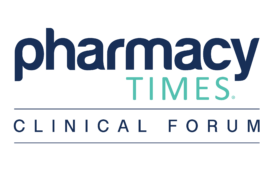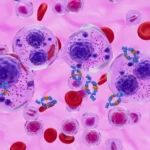
Although pharmacists make significant contributions in the treatment of patients with clear cell renal cell carcinoma (ccRCC), their exact role can vary, explained moderator Kirollos S. Hanna, PharmD, BCPS, BCOP, FACCC, director of pharmacy at Minnesota Oncology and assistant professor of pharmacy at Mayo Clinic Alix School of Medicine, Rochester, Minnesota, in a Pharmacy Times Clinical Forum discussion. According to Hanna, the pharmacist’s role regarding care management for patients with ccRCC can vary depending on the practice or with whom the pharmacist collaborates.
In some practices, pharmacists may find they are able to manage prescriptions and adjust drugs on their own. Some collaborative practices, however, may require pharmacists to contact a patient’s provider in order to approve their prescribing and medication adjustments.
“I think when we look at the management of patients on oral oncolytics in general with oncology, pharmacists play such a significant role, but it also varies across the board,” explained Hanna during the Clinical Forum. “[There are] pharmacists [who] have collaborative practices in places [where] they can manage antihypertensives on their own, and then I have pharmacists [who] can’t even prescribe a [drug] for a patient, and they have to page the provider when a patient calls and say [they’re] out of nausea [medication].”
In addition to the differences between practices, there are challenges that pharmacists must navigate when treating ccRCC, including the potential impact of treatments on quality of life (QOL) and the potential development of adverse effects (AEs). To address QOL issues, early palliative care—particularly pain management and control—can be significant. The panelists also highlighted that some practices have designated oral chemotherapy pharmacists who both dispense drugs and address AEs with patients. Panelists noted further that engaging with patients during refills is also helpful because it allows pharmacists to touch base with patients more frequently.
However, Hanna noted that there can be additional complexities for patients with ccRCC who are receiving both oral-based and intravenous (IV) therapies.
“When you look at challenges that we see in the [ccRCC] space, particularly if your patient is receiving an oral and an IV therapy, and then they’re coming to you for the infusion but you have no idea where their oral drug might be, do you start both [therapies] at the same time? Do they have a synergistic effect? Do you just start with whatever they get first?” Hanna said during the Clinical Forum. “There [are] a lot of challenges…around the pharmacy distribution models that can pose some challenges for our patients.”
Although there are steps that pharmacists and patients can take, technology can help with adherence. According to the panelists, there are tools that patients and pharmacists can utilize that are specifically intended to remind patients when to take their medications while assisting pharmacists with monitoring adherence.
“I’ve seen technology looking at encapsulating oral chemotherapy, and patients have to have a Bluetooth-enabled device on them—whether that’s a smartphone, an iPad, whatever it is—and [it] can actually detect what’s been ingested and…report back to a portal,” explained Hanna.
“There are other devices [where] it’s more manual…The dispensing pharmacy can fill this cartridge with medication, they plug it into a device, [and] the device will alert patients of when they need to take their oral [medication. It] automatically releases from the cartridge the number of pills needed and they can take it. Then there [are] obviously the standard calendars, pill boxes, smart caps, [and] weighing the bottles, just all these different things.”
Further, the panelists explained that pharmacists should understand that dose reductions may be necessary for some individuals in this patient population. Hanna explained that not all patients fit into “cookie-cutter” expectations for treatment and care, and that on some occasions, keeping patients on a consistent dose—because of what may have been reported in clinical trials—for an extended duration of time may be more harmful to a patient’s QOL. Panelists also highlighted that oral oncolytics are often dosed too high, and for these drugs, it may be more beneficial for patients to explore the maximum effective dose rather than the maximum tolerated dose.
The panelists acknowledged that juggling treatment options, monitoring patient adherence, and managing patient QOL while helping patients address the financial aspects of treatments can pose challenges for a single pharmacist. Having other pharmacists to lessen the burden and help “wear the different hats” of the pharmacist can be beneficial, resulting in a more engaged workforce.





